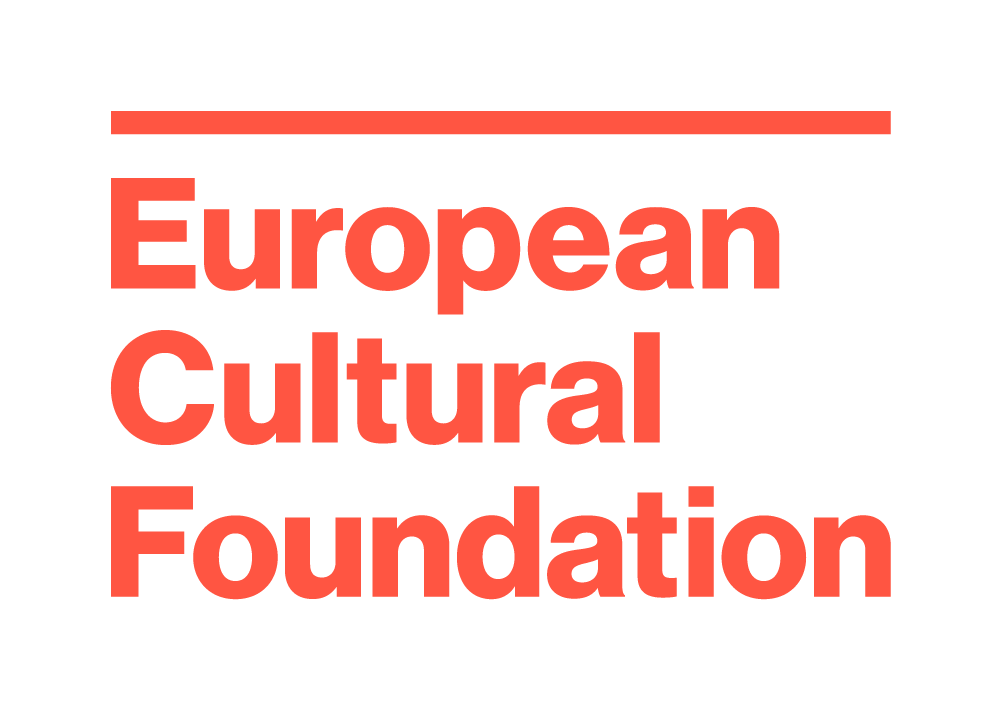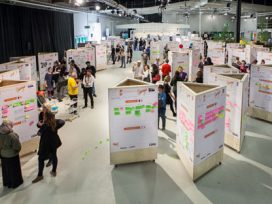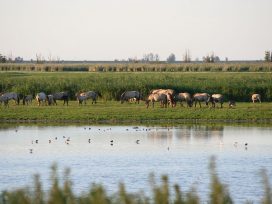Legal hacking and space
What can urban commons learn from the free software hackers?
There is now a need to readdress urban commons through the lens of the digital commons, writes Dubravka Sekulic. The lessons to be drawn from the free software community and its resistance to the enclosure of code will likely prove particularly valuable where participation and regulation are concerned.
Commons are a particular type of institutional arrangement for governing the use and disposition of resources. Their salient characteristic, which defines them in contradistinction to property, is that no single person has exclusive control over the use and disposition of any particular resource. Instead, resources governed by commons may be used or disposed of by anyone among some (more or less defined) number of persons, under rules that may range from “anything goes” to quite crisply articulated formal rules that are effectively enforced.
(Benkler 2003: 6)
The above definition of commons, from the seminal paper “The political economy of commons” by Yochai Benkler, addresses any type of commons, whether analogue or digital. In fact, the concept of commons entered the digital realm from physical space in order to interpret the type of communities, relationships and production that started to appear with the development of the free as opposed to the proprietary. Peter Linebaugh charted in his excellent book Magna Carta Manifesto, how the creation and development of the concept of commons were closely connected to constantly changing relationships of people and communities to the physical space. Here, I argue that the concept was enriched when it was implemented in the digital field. Readdressing urban space through the lens of digital commons can enable another imagination and knowledge to appear around urban commons.
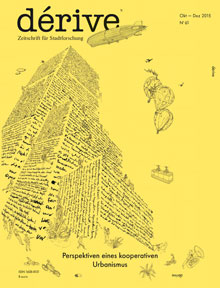 The notion of commons in (urban) space is often complicated by archaic models of organization and management – “the pasture we knew how to share”. There is a tendency to give the impression that the solution is in reverting to the past models. In the realm of digital though, there is no “pasture” from the Middle Ages to fall back on. Digital commons had to start from scratch and define its own protocols of production and reproduction (caring and sharing). Therefore, the digital commons and free software community can be the one to turn to, not only for inspiration and advice, but also as a partner when addressing questions of urban commons. Or, as Marcell Mars would put it “if we could start again with (regulating and defining) land, knowing what we know now about digital networks, we could come up with something much better and appropriate for today’s world. That property wouldn’t be private, maybe not even property, but something else. Only then can we say we have learned something from the digital” (2013).
The notion of commons in (urban) space is often complicated by archaic models of organization and management – “the pasture we knew how to share”. There is a tendency to give the impression that the solution is in reverting to the past models. In the realm of digital though, there is no “pasture” from the Middle Ages to fall back on. Digital commons had to start from scratch and define its own protocols of production and reproduction (caring and sharing). Therefore, the digital commons and free software community can be the one to turn to, not only for inspiration and advice, but also as a partner when addressing questions of urban commons. Or, as Marcell Mars would put it “if we could start again with (regulating and defining) land, knowing what we know now about digital networks, we could come up with something much better and appropriate for today’s world. That property wouldn’t be private, maybe not even property, but something else. Only then can we say we have learned something from the digital” (2013).
Enclosure as the trigger for action
The moment we turn to commons in relation to (urban) space is the moment in which the pressure to privatize public space and to commodify every aspect of urban life has become so strong that it can be argued that it mirrors a moment in which Magna Carta Libertatum was introduced to protect the basic reproduction of life for those whose sustenance was connected to the common pastures and forests of England in the thirteenth century. At the end of the twentieth century, urban space became the ultimate commodity, and increasing privatization not only endangered the reproduction of everyday life in the city; the rent extraction through privatized public space and housing endangered bare life itself. Additionally, the cities’ continuous privatization of its amenities transformed almost every action in the city, no matter how mundane – as for example, drinking a glass of water from a tap –, into an action that creates profit for some private entity and extracts it from the community. Thus every activity became labour, which a citizen-worker is not only alienated from, but also unaware of. David Harvey’s statement about the city replacing the factory as a site of class war seems to be not only an apt description of the condition of life in the city, but also a cry for action.
When Richard Stallman turned to the foundational gesture of the creation of free software, GNU/GPL (General Public Licence) was his reaction to the artificially imposed logic of scarcity on the world of code – and the increasing and systematic enclosure that took place in the late 1970s and 1980s as “a tidal wave of commercialization transformed software from a technical object into a commodity, to be bought and sold on the open market under the alleged protection of intellectual property law” (Coleman 2012: 138). Stallman, who worked as a researcher at MIT’s Artificial Intelligence Laboratory, detected how “[m]any programmers are unhappy about the commercialization of system software. It may enable them to make more money, but it requires them to feel in conflict with other programmers in general rather than feel as comrades. The fundamental act of friendship among programmers is the sharing of programs; marketing arrangements now typically used essentially forbid programmers to treat others as friends. The purchaser of software must choose between friendship and obeying the law. Naturally, many decide that friendship is more important. But those who believe in law often do not feel at ease with either choice. They become cynical and think that programming is just a way of making money” (Stallman 2002: 32).
In the period between 1980 and 1984, “one man [Stallman] envisioned a crusade to change the situation” (Moglen 1999). Stallman understood that in order to subvert the system, he would have to intervene in the protocols that regulate the conditions under which the code is produced, and not the code itself; although he did contribute some of the best lines of code into the compiler and text editor – the foundational infrastructure for any development. The gesture that enabled the creation of a free software community that yielded the complex field of digital commons was not a perfect line of code. The creation of GNU General Public License (GPL) was a legal hack to counteract the imposing of intellectual property law on code. At that time, the only license available for programmers wanting to keep the code free was public domain, which gave no protection against the code being appropriated and closed. GPL enabled free codes to become self-perpetuating. Everything built using a free code had to be made available under the same condition, in order to secure the freedom for programmers to continue sharing and not breaking the law. “By working on and using GNU rather than proprietary programs, we can be hospitable to everyone and obey the law. In addition, GNU serves as an example to inspire and as a banner to rally others to join in sharing. This can give us a feeling of harmony, which is impossible if we use software, which is not free. For about half the programmers I talk to, this is an important happiness that money cannot replace” (Stallman 2002: 33).
Architects and planners as well as environmental designers have for too long believed the opposite, that a good enough design can subvert the logic of enclosure that dominates the production and reproduction of space; that a good enough design can keep space open and public by the sheer strength of spatial intervention. Stallman rightfully understands that no design is strong enough to keep private ownership from claiming what it believes belongs to it. Digital and urban commons, despite operating in completely different realms and economies, are under attack from the same threat of “market processes” that “crucially depend upon the individual monopoly of capitalists (of all sorts) over ownership of the means of production, including finance and land. All rent, recall, is a return to the monopoly power of private ownership of some crucial asset, such as land or a patent. The monopoly power of private property is therefore both the beginning-point and the end-point of all capitalist activity” (Harvey 2012: 100). Stallman envisioned a bleak future (2003: 26-28) but found a way to “relate the means to the ends”. He understood that the emancipatory task of a struggle “is not only what has to be done, but also how it will be done and who will do it” (Stavrides & De Angelis: 7). Thus, to produce the necessary requirements – both for a community to emerge, but also for the basis of future protocols – tools and methodologies are needed for the community to create both free software and itself.
Renegotiating (undoing) property, hacking the law, creating community
Property, as an instrument of allocation of resources, is a right that is negotiated within society and by society and not written in stone or given as such. The digital, more than any other field, discloses property as being inappropriate for contemporary relationships between production and reproduction and, additionally, proves how it is possible to fundamentally rethink it. The digital offers this possibility as it is non-material, non-rival and non-exclusive (Meretz 2013), unlike anything in the physical world. And Elinor Ostrom’s lifelong empirical researches give ground to the belief that eschewing property, being the sole instrument of allocation, can work as a tool of management even for rival, excludable goods.
The value of information in digital form is not flat, but property is not the way to protect that value, as the music industry realized during the course of the last ten years. Once the copy is out there, the cost of protecting its exclusivity on the grounds of property becomes too high in relation to the potential value to be extracted. For example, the value is extracted from information through controlling the moment of its release and not through subsequent exploitation. Stallman decided to tackle the imposition of the concept of property on computer code (and by extension to the digital realm as a whole) by articulating it in another field: just as property is the product of constant negotiations within a society, so are legal regulations. After some time, he was joined by “[m]any free software developers [who] do not consider intellectual property instruments as the pivotal stimulus for a marketplace of ideas and knowledge. Instead, they see them as a form of restriction so fundamental (or poorly executed) that they need to be counteracted through alternative legal agreements that treat knowledge, inventions, and other creative expressions not as property but rather as speech to be freely shared, circulated, and modified” (Coleman 2012: 26).
The digital sphere can give a valid example of how renegotiating regulation can transform a resource from scarce to abundant. When the change from analogue signal to packet switching begun to take effect, the distribution of finite territory and the way the radio frequency spectrum was managed got renegotiated and the amount of slots of space to be allocated grew by an order of magnitude while the absolute size of the spectrum stayed the same. This shift enabled Brecht’s dream of a two-sided radio to become reality, thus enabling what he had suggested: “change this apparatus over from distribution to communication”.1
According to Lawrence Lessig, what regulates behavior in cyberspace is an interdependence of four constraints: market, law, architecture and norms (Lessig 2012: 121-25). Analogously, space can be put in place of cyberspace, as the regulation of space is the sum of these four constraints. These four constraints are in a dynamic relationship in which the balance can be tilted towards one, depending on how much each of these categories puts pressure on the other three. Changes in any one reflect the regulation of the whole. “Architecture” in Lessig’s theory should be understood broadly as the “built environment” that regulates behaviour in (cyber)space. In the last few decades we have experienced the domination of the market reconfiguring the basis of norms, law and architecture. In order to counteract this, the other three constraints need to be re-negotiated. In digital space, this reconfiguration happened by declaring the code – that is, the set of instructions written as highly formalized text in a specific programming language to be executed (usually) by the computer – to be considered as speech in front of the law, and by hacking the law in order to disrupt the way that property relationships are formed.
To put it simply, in order to create a change in dynamics between the architecture, norms and the market, the law had to be addressed first. This is not a novel procedure, “legal hacking is going on all the time, it is just that politics is doing it under the veil of legality because they are the parliament, they are Microsoft, which can hire a whole law firm to defend them and find all the legal loopholes. Legal hacking is the norm actually” (Bailey 2013). When it comes to physical space, one of the most obvious examples of the reconfiguration of regulations under the influence of the market is to create legal provisions, norms and architecture to sustain the concept of developing (and privatizing) public space through public-private partnerships. The decision of the Italian parliament that the privatization of services (specifically of water management) is legal and does not obstruct one’s access to water as a human right, is another example of a crude manipulation of the law by the state in favour of the market. Unlike legal hacks by corporations that aim to create a favourable legal climate for another round of accumulation through dispossession, Stallman’s hack tries to limit the impact of the market and to create a space of freedom for the creation of a code and of sharable knowledge, by questioning one of the central pillars of liberal jurisprudence: (intellectual) property law.
Similarly, translated into physical space, one of the initiatives in Europe that comes closest to creating a real existing urban commons, Teatro Valle Occupato in Rome, is doing the same, “pushing the borders of legality of private property” by legally hacking the institution of a foundation to “serve a public, or common, purpose” and having “notarized [a] document registered with the Italian state, that creates a precedent for other people to follow in its way” (Bailey 2013). Sounds familiar to Stallman’s hack as the fundamental gesture by which community and the whole eco-system can be formed.
It is obvious that, in order to create and sustain that type of legal hack, it is a necessity to have a certain level of awareness and knowledge of how systems, both political and legal, work, i.e. to be politically literate. “While in general”, says Italian commons-activist and legal scholar Saki Bailey, “we’ve become extremely lazy [when it comes to politics]. We’ve started to become a kind of society of people who give up their responsibility to participate by handing it over to some charismatic leaders, experts of [a] different type” (2013). Free software hackers, in order to understand and take part in a constant negotiation that takes place on a legal level between the market that seeks to cloister the code and hackers who want to keep it free, had to become literate in an arcane legal language. Gabriella Coleman notes in Coding Freedom that hacker forums sometimes tend to produce legal analysis that is just as serious as one would expect to find in a law office. Like the occupants of Teatro Valle, free software hackers understand the importance of devoting time and energy to understand constraints and to find ways to structurally divert them.
This type of knowledge is not shared and created in isolation, but in socialization, in discussions in physical or cyber spaces (such as #irc chat rooms, forums, mailing lists…), the same way free software hackers share their knowledge about code. Through this process of socializing knowledge, “the community is formed, developed, and reproduced through practices focused on common space. To generalize this principle: the community is developed through commoning, through acts and forms of organization oriented towards the production of the common” (Stavrides 2012: 588). Thus forming a community is another crucial element of the creation of digital commons, but even more important are its development and resilience. The emerging community was not given something to manage, it created something together, and together devised rules of self-regulation and decision-making.
The prime example of this principle in the free software community is the Debian Project, formed around the development of the Debian Linux distribution. It is a volunteer organization consisting of around 3,000 developers that since its inception in 1993 has defined a set of basic principles by which the project and its members conduct their affairs. This includes the introduction of new people into the community, a process called Debian Social Contract (DSC). A special part of the DSC defines the criteria for “free software”, thus regulating technical aspects of the project and also technical relations with the rest of a free software community. The Debian Constitution, another document created by the community so it can govern itself, describes the organizational structure for formal decision-making within the project.
Another example is Wikipedia, where the community that makes the online encyclopedia also takes part in creating regulations, with some aspects debated almost endlessly on forums. It is even possible to detect a loose community of “Internet users” who took to the streets all over the world when SOPA (Stop Online Piracy Act) and PIPA (Preventing Real Online Threats to Economic Creativity and Theft of Intellectual Property Act) threatened to enclose the Internet, as we know it; the proposed legislation was successfully contested.
Free software projects that represent the core of the digital commons are most of the time born of the initiative of individuals, but their growth and life cycle depend on the fact that they get picked up by a community or generate community around them that is allowed to take part in their regulation and in decisions about which shape and forms the project will take in the future. This is an important lesson to be transferred to the physical space in which many projects fail because they do not get picked up by the intended community, as the community is not offered a chance to partake in its creation and, more importantly, its regulation.
Building common infrastructure and institutions
“The expansion of intellectual property law” as the main vehicle of the trend to enclose the code that leads to the act of the creation of free software and, thus, digital commons, “is part and parcel of a broader neoliberal trend to privatize what was once under public or under the state’s aegis, such as health provision, water delivery, and military services” (Coleman 2012: 16). The structural fight headed by the GNU/GPL against the enclosure of code “defines the contractual relationship that serves to secure the freedom of means of production and to constitute a community of those participating in the production and reproduction of free resources. And it is this constitutive character, as an answer to an every time singular situation of appropriation by the capital, that is a genuine political emancipation striving for an equal and free collective production” (Mars & Medak 2004). Thus digital commons “is based on the communication among singularities and emerges through collaborative social processes of production” (Negri & Hardt 2005: 204).
The most important lesson urban commons can take from its digital counterpart is at the same time the most difficult one: how to make a structural hack in the moment of the creation of an urban commons that will enable it to become structurally self-perpetuating, thus creating fertile ground not only for a singular spatialization of urban commons to appear, but to multiply and create a whole new eco-system. Digital commons was the first field in which what Negri and Hardt (2009: 3-21) called the “republic of property” was challenged. Urban commons, in order to really emerge as a spatialization of a new type of relationship, need to start undoing property as well in order to socially re-appropriate the city. Or in the words of Stavros Stavrides “the most urgent and promising task, which can oppose the dominant governance model, is the reinvention of common space. The realm of the common emerges in a constant confrontation with state-controlled ‘authorized’ public space. This is an emergence full of contradictions, perhaps, quite difficult to predict, but nevertheless necessary. Behind a multifarious demand for justice and dignity, new roads to collective emancipation are tested and invented. And, as the Zapatistas say, we can create these roads only while walking. But we have to listen, to observe, and to feel the walking movement. Together” (Stavrides 2012: 594).
The big task for both digital and urban commons is “[b]uilding a core common infrastructure [which] is a necessary precondition to allow us to transition away from a society of passive consumers buying what a small number of commercial producers are selling. It will allow us to develop into a society in which all can speak to all, and in which anyone can become an active participant in political, social and cultural discourse” (Benkler 2003: 9). This core common infrastructure has to be porous enough to include people that are not similar, to provide “a ground to build a public realm and give opportunities for discussing and negotiating what is good for all, rather than the idea of strengthening communities in their struggle to define their own commons. Relating commons to groups of “similar” people bears the danger of eventually creating closed communities. People may thus define themselves as commoners by excluding others from their milieu, from their own privileged commons.” (Stavrides 2010). If learning carefully from digital commons, urban commons need to be conceptualized on the basis of the public, with a self-regulating community that is open for others to join. That socializes knowledge and thus produces and reproduces the commons, creating a space for political emancipation that is capable of judicial arguments for the protection and extension of regulations that are counter-market oriented.
References
Bailey, Saki (2013): Interview by Dubravka Sekulic and Alexander de Cuveland.
Benkler, Yochai (2003): “The political economy of commons”. Upgrade IV, no. 3, 6-9, www.benkler.org/Upgrade-Novatica%20Commons.pdf.
Benkler, Yochai (2006): The Wealth of Networks: How Social Production Transforms Markets and Freedom. New Haven: Yale University Press.
Brecht, Bertolt (2000): “The radio as a communications apparatus”. In: Brecht on Film and Radio, edited by Marc Silberman. Methuen, 41-6.
Coleman, E. Gabriella (2012): Coding Freedom: The Ethics and Aesthetics of Hacking. Princeton University Press / Kindle edition.
Hardt, Michael and Antonio Negri (2005): Multitude: War and Democracy in the Age of Empire. Penguin Books.
Hardt, Michael and Antonio Negri (2011): Commonwealth. Belknap Press of Harvard University Press.
Harvey, David (2012): The Art of Rent. In: Rebel Cities: From the Right to the City to the Urban Revolution, 1st ed. Verso, 94-118.
Hill, Benjamin Mako (2012): Freedom for Users, Not for Software. In: Bollier, David & Helfrich, Silke (Ed.): The Wealth of the Commons: a World Beyond Market and State. Levellers Press / E-book.
Lessig, Lawrence (2012): Code: Version 2.0. Basic Books.
Linebaugh, Peter (2008): The Magna Carta Manifesto: Liberties and Commons for All. University of California Press.
Mars, Marcell (2013): Interview by Dubravka Sekulic.
Mars, Marcell and Tomislav Medak (2004): “Both devil and gnu”, www.desk.org:8080/ASU2/newsletter.Zarez.N5M.MedakRomicTXT.EnGlish.
Martin, Reinhold (2013): “Public and common(s): Places: Design observer”, placesjournal.org/article/public-and-commons.
Meretz, Stefan (2010): “Commons in a taxonomy of goods”, keimform.de/2010/commons-in-a-taxonomy-of-goods.
Mitrasinovic, Miodrag (2006): Total Landscape, Theme Parks, Public Space, 1st ed. Ashgate.
Moglen, Eben (1999): “Anarchism triumphant: Free software and the death of copyright”, First Monday, firstmonday.org/ojs/index.php/fm/article/view/684/594.
Stallman, Richard and Joshua Gay (2002): Free Software, Free Society: Selected Essays of Richard M. Stallman. GNU Press.
Stallman, Richard and Joshua Gay (2003): “The Right to Read”. Upgrade IV, no. 3, 26-8.
Stavrides, Stavros (2012) “Squares in movement”. South Atlantic Quarterly 111, no. 3, 585-96.
Stavrides, Stavros (2013): “Contested urban rhythms: From the industrial city to the post-industrial urban archipelago”. The Sociological Review 61, 34-50.
Stavrides, Stavros, and Massimo De Angelis (2010): “On the commons: A public interview with Massimo De Angelis and Stavros Stavrides”. e-flux 17, 1-17, www.e-flux.com/journal/on-the-commons-a-public-interview-with-massimo-de-angelis-and-stavros-stavrides/.
"[...] radio is one-sided when it should be two-. It is purely an apparatus for distribution, for mere sharing out. So here is a positive suggestion: change this apparatus over from distribution to communication". See "The radio as a communications apparatus", Brecht 2000.
Published 4 November 2015
Original in English
First published by derive 61 (2015)
Contributed by dérive © Dubravka Sekulic / dérive / Eurozine
PDF/PRINTPublished in
In collaboration with
In focal points
- The city belongs to all of us
- No collaborative economy without commons
- Polish culture is turning barren
- Creating the commons in Spain: The current state of play
- Creating the commons in Moldova: The current state of play
- The power to refuse
- Culture WITH people, not just FOR people!
- When commoning strategies travel
- A rough guide to the commons
- New models of governance of culture
Newsletter
Subscribe to know what’s worth thinking about.
Related Articles
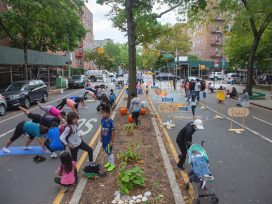
Once referring to natural resources and collectively managed land, the notion of the ‘commons’ has expanded across cultural, scientific and digital realms. Can commonality dodge the threat of capitalist exploitation and develop into an organizational principle for complex societies?
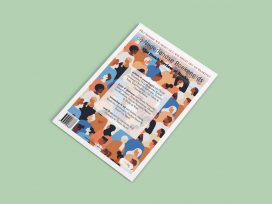
On making commons concrete
The Dutch Review of Books 2/2021
‘The Dutch Review of Books’ presents: the commons, vying for legitimacy between state and capitalism; the void of societal responsibility for #MeToo; and African oral traditions evident in rap music.
